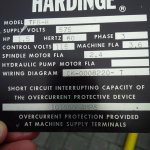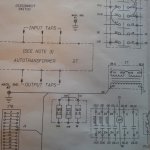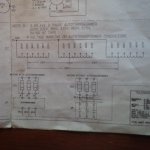C-FFWY
Plastic
- Joined
- Oct 18, 2013
- Location
- western Canada
I have a gently-used Hardinge HLV-H TFB lathe (the non-threading toolroom lathe).
It came with a big grey switch box and a data plate that says "feed me a diet of 575V at 3.6 amps". See the pic of the data plate. I have 220V single phase in my shop.
I want to use all the nice Hardinge stuff (well-balanced motor, speed control, power feed, coolant pump). I do not just want to wire a VFD to the motor and jerry-rig the rest, even though I know it will cost a little (a lot) more.
The brute force method is to get a RPC to get to 240V 3-phase, and then a 3-phase transformer up to 575v.
HOWEVER, the first thing that happens when the 575V gets into the lathe is that it (all of it) goes into a transformer (see pics).
The wiring diagram is not much help (see pics).
Then it seems to go to another transformer and after that I am clueless.
Can anyone tell me what voltage it gets stepped down to after the first controller? It SEEMs like it goes to 230V, but that seems too good to be true (i.e. I could just bypass the transformer and hook a RPC directly to the leads at 240V 3-phase???).
This is a great little machine and I am DYING to get it working...
Bill





It came with a big grey switch box and a data plate that says "feed me a diet of 575V at 3.6 amps". See the pic of the data plate. I have 220V single phase in my shop.
I want to use all the nice Hardinge stuff (well-balanced motor, speed control, power feed, coolant pump). I do not just want to wire a VFD to the motor and jerry-rig the rest, even though I know it will cost a little (a lot) more.
The brute force method is to get a RPC to get to 240V 3-phase, and then a 3-phase transformer up to 575v.
HOWEVER, the first thing that happens when the 575V gets into the lathe is that it (all of it) goes into a transformer (see pics).
The wiring diagram is not much help (see pics).
Then it seems to go to another transformer and after that I am clueless.
Can anyone tell me what voltage it gets stepped down to after the first controller? It SEEMs like it goes to 230V, but that seems too good to be true (i.e. I could just bypass the transformer and hook a RPC directly to the leads at 240V 3-phase???).
This is a great little machine and I am DYING to get it working...
Bill







